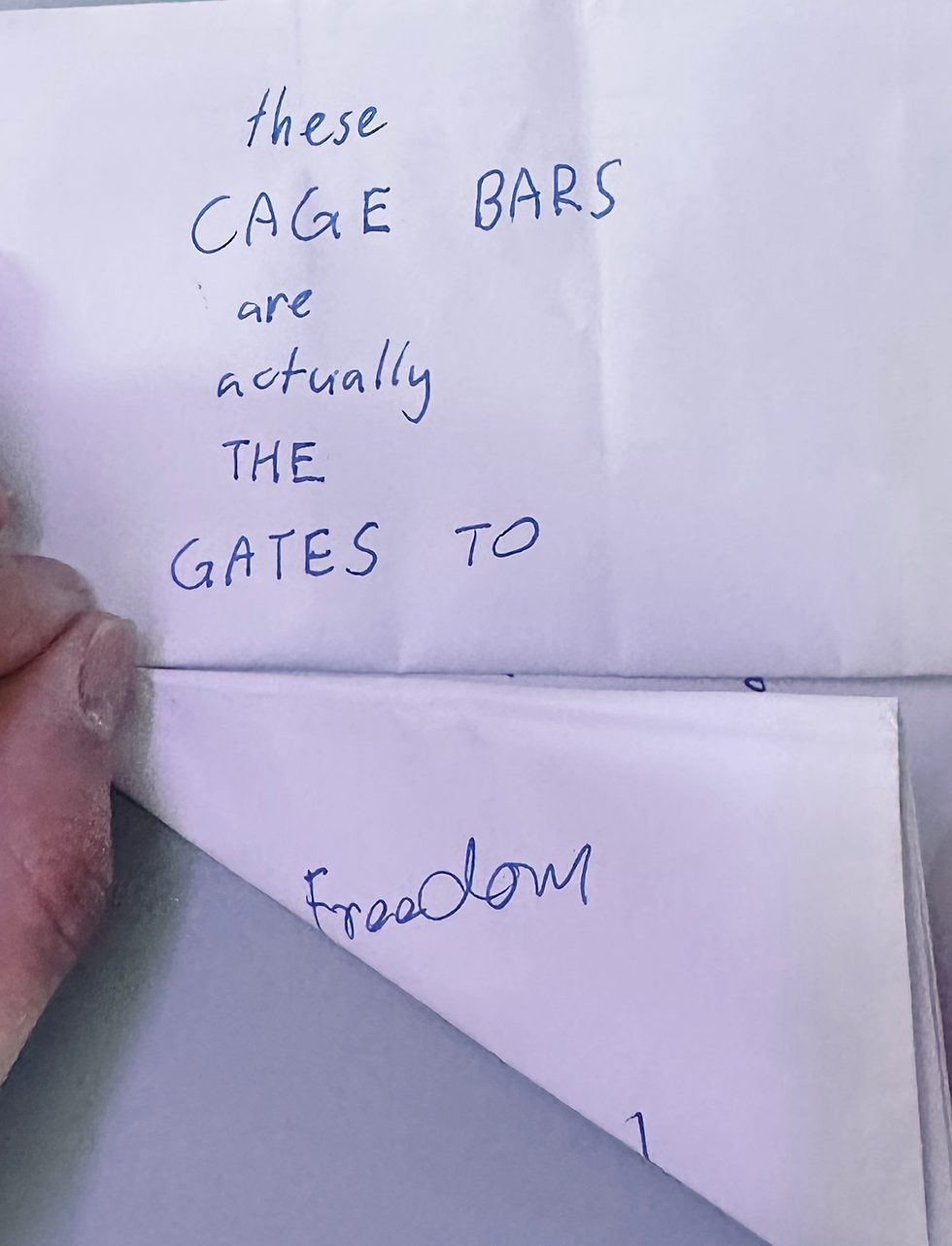The greatest change occurs from within
- harrisonsaito6
- Oct 2, 2024
- 4 min read
Extract from my uni paper on the essence of 'motivating students'. It starts from within.
"Introduction
Assessment for learning clarifies a student’s learning journey and where they’re at with their understanding. Through an explicit series of scaffolded questioning (Who, what when, where, why and how) I relentlessly aimed for depth in student understanding. With continuity in the same scaffold in each lesson, combined with continuity in drawing out personal voice and opinion, I aimed to maximise their own buy-in to the lessons as well as their exemplification of their understanding through organic interaction. My emphasis on student understanding is strongly inspired by Anderson and Krathwohl’s (2001) revised Bloom’s Taxonomy where understanding underpins all subsequent higher order thinking.
A bit more informal than formal
Most of the lesson tasks including the AFL tasks at the end of each of the 4 lessons, were informal. This was intentionally implemented to create an optimal code match with the classroom paradigms of 2024. Through carefully timed classroom, paired and group discussions, I aimed to create a holistic classroom culture of constant involvement. For further student buy-in, I aimed to give students carefully integrated opportunities to take on more responsibility and free will.
Parts of the lessons were formal where I would share foundational concepts that are required in the topic of ‘investing’. These formal and explicit conceptual explorations is just as important to maintain order, structure and invigorate student certainty to self-initiate their attempts at classroom, homework and AFL tasks. Examples of formal concept explorations include ‘diversification’. I aimed to keep a careful ratio of both informal and formal activities and maintained more informal activities over formal.
I also integrated some philosophy into these lessons to maintain the ethos that learning is holistic. Commerce, particularly investing, has many explicit and quite implicit applications of philosophy. Students in their current context of 2024, are constantly exposed to social media influencers where the discourse revolves around wellness, motivation and self-development philosophies. For example, in lesson 2, I added Newton’s Third Law of Motion. This is usually explored in physics but may also have an importance place in assisting understanding for investing.
Minimising distractions and maximising engagement
I ensured the lessons had explicit instructions as to when to use devices. As for fulfilling my own 5Ws and H to teach this option study of investing, majority of my components did not require a device. As such, I carefully selected when students are to use laptops and when they should put them away. For example, when students are trying to further each other’s understanding on ‘investment options’ or ‘risk and return’ via collaboration (Vygotsky, 1978), they do not need to default to instantly finding an answer through search engines or generative A.I. Instead, they could inductively (Coutinho et al, 2023) grapple to form an understanding. This process of trial and error is conducive to deeper learning. Such theory is supported by the works of Sweller’s (1988) Cognitive Load Theory where germane cognitive load is optimised by a process of marrying gradually taught new knowledge with existing schemas. By minimising ‘working memory’ and regurgitation (Anderson and Krathwohl, 2001), students are more involved and thereby engaged. I strived to connect new knowledge with existing schemas optimally by encouraging personal buy-in through relevant contextualisation (Sawatzki et al, 2017) and actively discussing around student opinion.
Further, I aimed to keep the lesson’s goals, activities and AFL explicit and visible from beginning to end. By maintaining visibility, students are constantly reminded of what the task is, minimising opportunities of distraction and disengagement (Hattie, 2009). I also kept the pace of the class relatively fast paced, to remind students to maintain some urgency to stay focused. By supplementing visibility with challenging, faster paced and stimulating lesson content, I strongly believe the class culture is holistically conducive towards learning.
I am mindful that with increased autonomy, there is the risk of students unknowingly falling off task and misunderstanding the class. Here, I am inspired by the spirit of Pearson and Gallagher’s (1983), ‘Gradual Release of Responsibility’. By showing worked examples in real time as well as sharing a consistent structure (5Ws and H) I aimed to ignite curiosity and courage for students to try things on their own. I exemplified this particularly with the most difficult task out of the 4 lessons: the group presentation on a hypothetical investment portfolio. As a secondary objective, I aimed to carefully cultivate a student’s appreciation for due diligence.
Conclusion
Ultimately, by prioritising student understanding at the essence of my lesson’s planning and execution I believe all the subsequent activities and discussions would also revolve around a collaborative desire to understand. Such an essence is in line with the spirit of ‘assessment for learning’. I aimed to balance this relentless quest towards facilitating student understanding by a logical and consistently prevailing framework of the 5Ws and H. This symbiosis hopefully nurtures curious, logical and diligent students which I believe are fundamental ingredients towards developing financial acumen in our modern world."



Comments